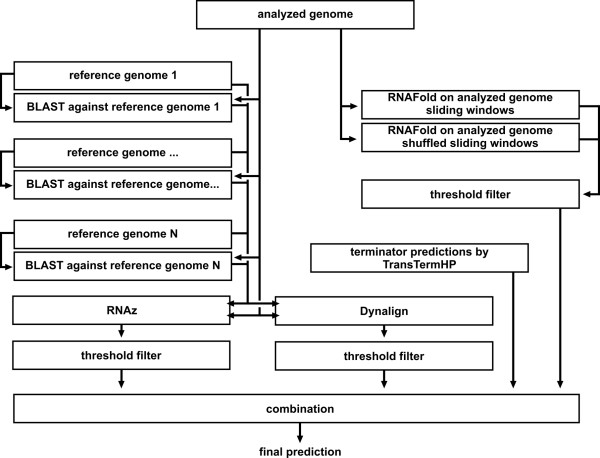Figure 2.
Workflow used for tests of the combined detection method. RNAz branch: The analysed genome is compared with each of the reference genomes using BLAST. It is then processed using a sliding window. For each window the best matching subsequences from the reference genomes, as found by BLAST, are retrieved. These subsequences and the sequence from the window of the analysed genome are then aligned by ClustalW (which is part of the RNAz module). Finally, the resulting alignment is analysed for conserved secondary structures by RNAz. If the prediction score given by RNAz is above the threshold of 0.9, the window is predicted to contain ncRNA. Dynalign branch: The analysed genome is processed using a sliding window, for each window the most similar regions of the reference genomes are given by the BLAST modules. The region with the highest BLAST score is used for structural alignment using Dynalign. The resulting alignment score is compared with a threshold to give a final prediction. RNAfold branch: The first RNAfold module predicts the minimum free energy of the minimum free energy structure for sliding windows of the analysed genome. Another RNAfold module does the same for shuffled versions of these windows. The obtained mean and standard deviation of the distribution are used to calculate a threshold: If the minimum free energy value of the original window is 3.5 standard deviations above the mean, the window is considered to contain a potential transcript with a highly defined secondary structure, an indication of a possible ncRNA. Combination: To combine the signals from the two methods, the overlap or the union of two or three methods is calculated to improve precision or sensitivity, respectively.

